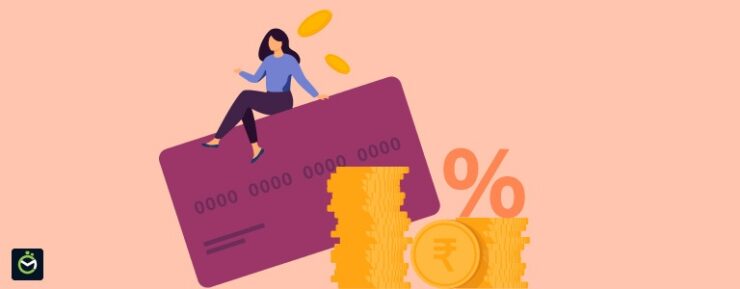EMIs are an excellent option when you want to buy an item beyond your budget. Whether you want to purchase a high-end laptop, a flagship smartphone or a designer blazer, EMIs come to your rescue. Instead of paying the entire amount upfront during purchase, you can repay the amount in small manageable amounts every month. The fixed amount you pay every month is known as the EMI.
Did you know that you can convert your credit card bills to EMI? Credit card EMI has become one of the most common methods to pay for expensive purchases. While credit card EMI seems like a great option to pay for big-ticket purchases, there are several downsides as well. Steep processing fees, reduction of the available credit card balance, penalties for late-payments, and more.
In this guide, we walk you through the pointers you must keep in mind before opting for a credit card EMI.
How does Credit Card EMI work?
Credit card EMIs are quite easy to understand. When you purchase a product beyond a specific amount (say Rs. 10,000), you can convert that amount into EMIs. The EMI amount is calculated based on the following factors:
- The interest rate charged by your card issuer
- The tenure you choose
- The down payment you provide (if any)
Let’s say, you have purchased a mobile phone worth Rs. 30,000 on your credit card. You pay a down payment amount of Rs. 10,000 upfront during the purchase. The remaining balance – Rs. 20,000 – will be converted into EMIs.
Assume that the card issuer charges an interest of 12%, and you go for a tenure of 1 year. Then the EMI you have to pay every month is Rs. 1867.
Credit Card EMIs Interest Rates at Leading Banks
| Bank | Interest Rate | Available Tenure |
| ICICI Bank Credit Cards |
|
Ranges from 3 months to 24 months |
| HDFC Bank Credit Cards | Starts from 1.5% per month | Ranges from 9 months to 36 months |
| State Bank of India Credit Cards |
|
Ranges from 3 months to 24 months |
| Axis Bank Credit Cards | Starts from 1.5% per month | 6 months to 2 years |
How to convert credit card purchases to EMI?
It’s easy to convert your purchase into EMI – all you have to do is select the EMI option when checking out and paying as usual.
You can convert the amount into EMI payments right during the purchase itself. This is applicable for both online and offline purchases. You can opt to convert the entire amount into EMI or pay a part of the amount as a down payment and convert the rest into EMIs.
5 Factors to Consider before Choosing Credit Card EMIs
Let’s take a look at the key factors that you must be aware of before opting for credit card EMIs so that you don’t end up paying more than you imagined.
- Not all Credit Cards offer an EMI conversion facility
If you plan to purchase an item using credit card EMI, the first step is to check if your credit card allows this facility. To find out whether your card has an EMI facility, you can check the terms and conditions manual that you received along with the card. Alternatively, you can contact the customer care of the credit card issuing company to check if this facility is available on your card and the terms and conditions.
- Your Spending Capacity is Reduced when you go for EMIs
Let’s assume that you have purchased a laptop worth Rs. 50,000 using credit card EMI. You may believe that your credit card limit will be restored to the original amount from the next month onwards. But this is not so!
Let’s assume your credit card limit is Rs. 60,000, and you have purchased a gadget for Rs. 50,000 on EMI. Then, your credit limit is effectively reduced to just Rs. 10,000. As and when you pay the EMI, the credit limit rises progressively. For example, if the EMI is Rs. 5000, then your credit limit increases to Rs. 15,000 in the first month, Rs. 20,000 in the second month and so on. Only when you repay the whole amount, the available credit limit will be restored to the original.
- Be Aware of the Processing Fee
When you opt for credit card EMIs, you are charged a one-time processing fee. This fee ranges from a small percentage of the loan amount to a fixed sum, depending on the card issuer. While selecting the EMI, this processing fee is also added along with interest charged.
Smart Tip: Did you know that you can get this processing fee waived off? If you maintain a stellar credit card history and repay your bills on time, then you can negotiate with the lender to waive off the processing fee.
- Most E-Commerce Stores offer Credit Card EMI
To provide customers with multiple payment options, leading eCommerce marketplaces like Amazon, Flipkart, Myntra, Ajio and others offer credit card EMIs. Using the online facility to convert your bill into EMI is super easy. All you have to do is select the credit card EMI option while checking out and proceed as usual.
- Be Mindful of Prepayment Penalties
Some credit card issuers charge a prepayment penalty when you pay the pending amount before the schedule. However, you can get this penalty waived off depending on your relationship with the lender. Banks are usually ready to waive the prepayment penalty for loyal customers who pay their credit card bills on time. Note that charging or waiving the prepayment penalty is at the discretion of the bank. However, it doesn’t hurt to check with your bank if you can get the amount waived.
Wrapping Up
Using the credit card EMI option is a great way to purchase items that you cannot afford to pay out of pocket. However, remember that when you convert your credit card bill to EMI, you’re essentially taking a loan on your credit card.
Credit card loans are one of the costliest loan products. Interest rates of 1.5% to 3% per month may seem small, but these rates run around 25% to 40% when annualised. Failure to repay the EMIs on time lead to several repercussions like – high penalties, late payment fees and even damages to your credit score.
So, make sure that you can afford to repay the EMI on time before converting your credit card bills to EMI. Also, negotiate with your bank to see if you can reduce the processing fee and prepayment penalties to reduce the overall cost.




























